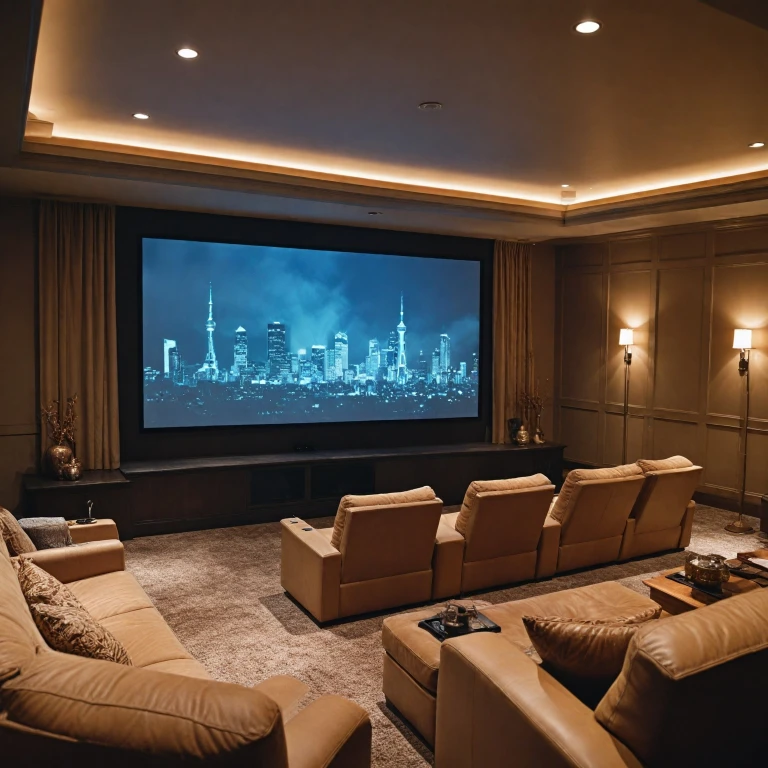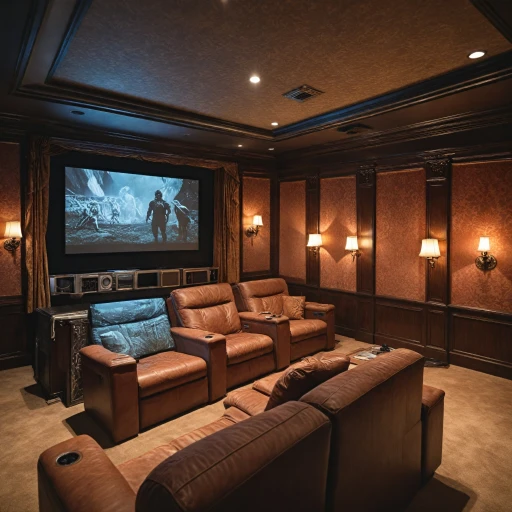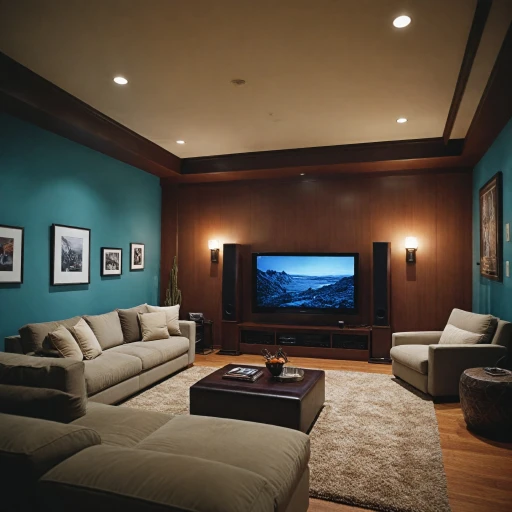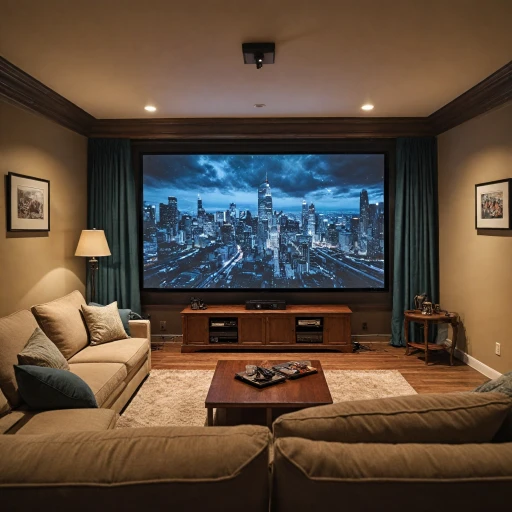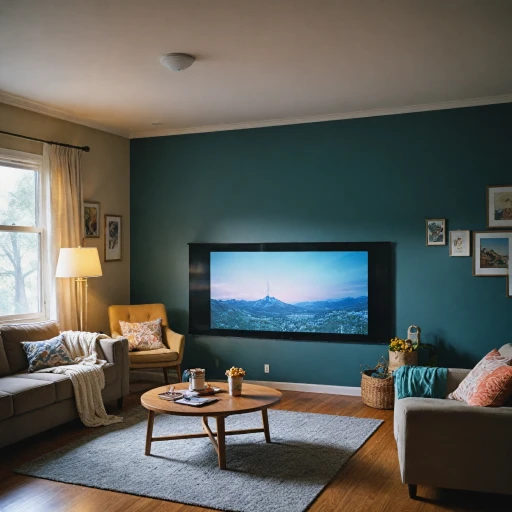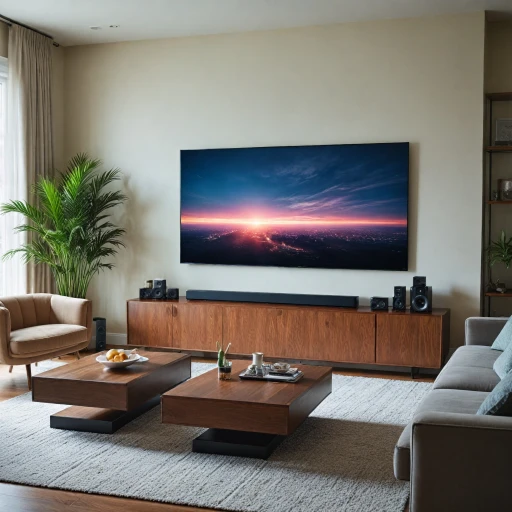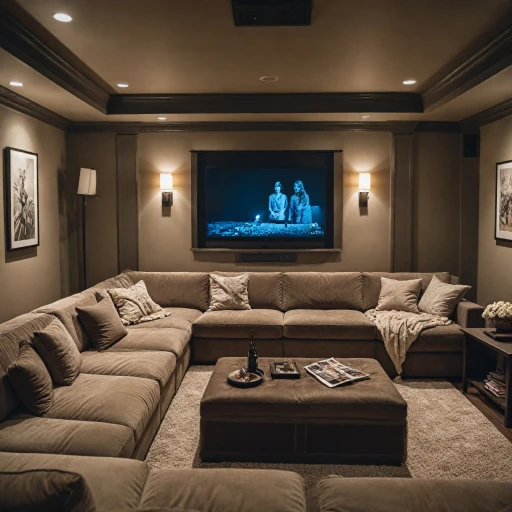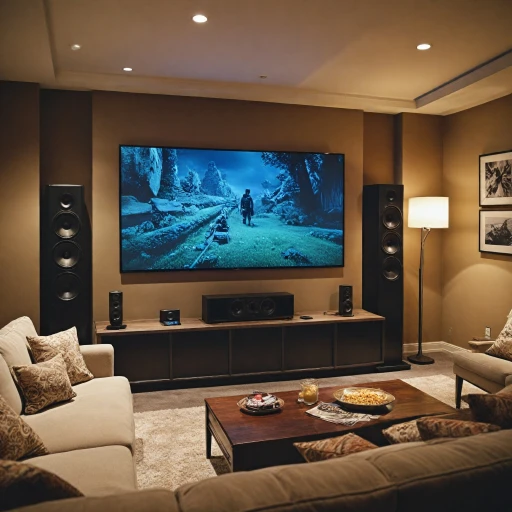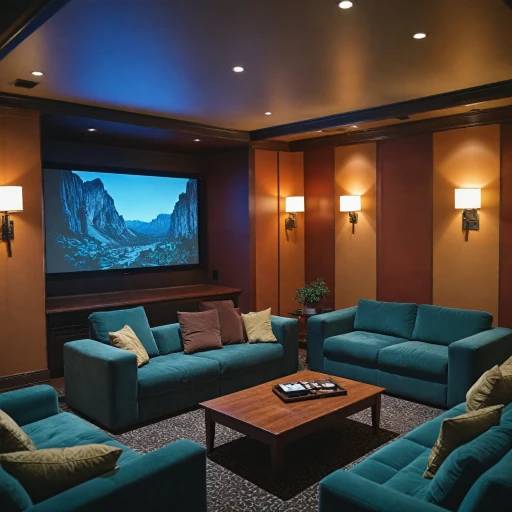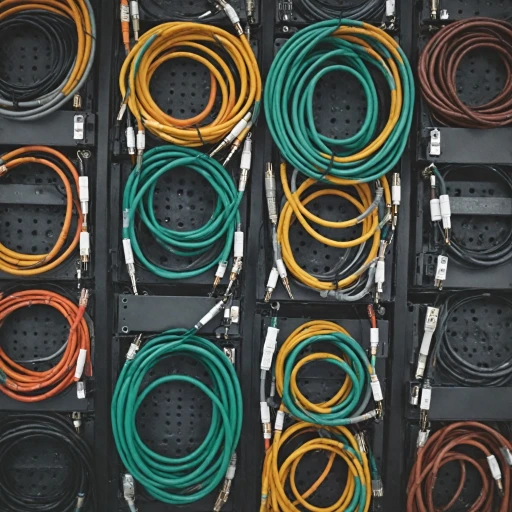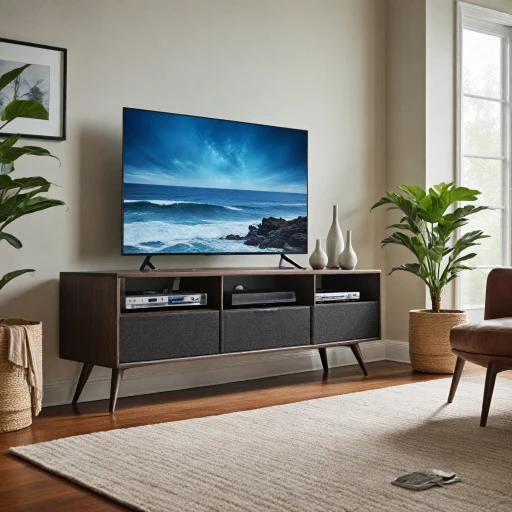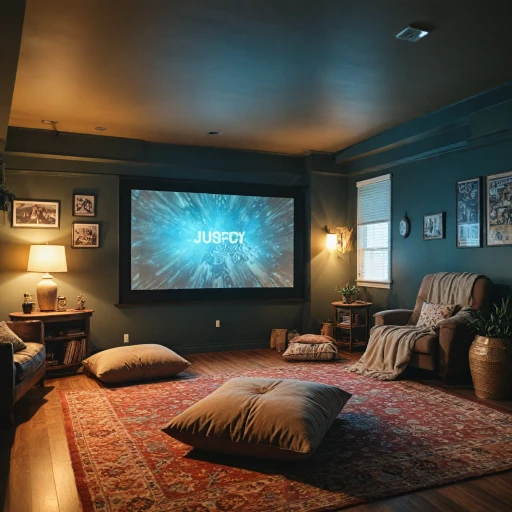
Understanding Retractable Projector Screens
Introduction to Retractable Screens
Benefits of Using a Retractable Projector Screen
The Advantages of a Foldable Movie Screen
Retractable projector screens offer a range of benefits that can enhance your home theater experience, especially when considering a motorized or manual pull option. One of the key advantages is the ability to save space without sacrificing quality. Unlike fixed-frame screens, retractable screens can be easily stored away, making them ideal for dual-purpose rooms such as a living room or office space.
Aesthetics and Versatility
Another noteworthy benefit is the aesthetics and versatility that these screens bring to your home theater setup. With a sleek design and availability in various sizes, ranging from an 80-inch projector screen to larger screens inch versions, they offer something for every space. Additionally, many models, such as those in the Elite Screens series, come with both black and white frame screens, providing an opportunity to match your decor seamlessly.
Ease of Use and Technology Integration
Modern retractable screens, like those from Screen Innovations, feature technological advancements such as tab tension and superior screen material, ensuring a wrinkle-free viewing surface. A motorized projector screen offers effortless operation, often with remote control options. It is especially beneficial in home theater settings that prioritize convenience and technology integration.
Size Flexibility for Optimal Viewing
One of the most appreciated aspects of retractable screens is their ability to accommodate various aspect ratios without permanent installation adjustments. For enthusiasts who frequently switch between formats, like those offered by Draper projection screens, this flexibility is invaluable. Whether paired with a short throw projector or standard models, these screens ensure high-quality projection across all formats.
For more details on selecting the perfect pull-down options that can elevate your home theater experience, consider exploring ways to enhance your viewing experience with a pull-down projector screen.
Choosing the Right Retractable Projector Screen for Your Space
Finding the Perfect Fit for Your Space
When selecting a retractable projector screen for your home theater, it’s important to consider the unique characteristics of your space. Screen size, aspect ratio, and screen material are critical factors, as they will significantly influence your viewing experience.
First, determine the screen size that aligns with your room dimensions and seating arrangement. Generally, a bigger projection screen is preferred for a more immersive experience, but make sure it doesn’t overpower your living room or dedicated theater space. For a standard home theater, screens ranging from 100 to 120 inches are quite popular, though larger or smaller options might better suit your needs.
Consider the aspect ratio of the projection screen, which should match your projector. The 16:9 ratio is the most common standard for home theaters, ideal for HD and 4K viewing experiences, while 4:3 is often used for presentations or older formats. Ensure that your projector’s native aspect ratio corresponds with that of the screen for optimal picture quality.
Screen material also plays a crucial role in projection quality. White screens are traditional and effective in many setups, providing a bright and vivid projection. However, in environments where ambient light is a concern, specialized materials like gray or black might offer better contrast by largely absorbing unwanted light. Elite Screens and Screen Innovations offer various options to accommodate different needs.
When deciding between a manual retractable or motorized projector screen, consider your budget and convenience preferences. Motorized draper screens offer the luxury of easy operation with a sleek finish, though at a higher price point than manual pull options. They are well-suited for a fixed installation on the ceiling or wall.
Additionally, ensure that the installation location can support the weight and operation of your chosen screen. Fixed frame and tab tension screens can provide better stability and smoothness for the projected image but typically lack the retractability factor.
Taking into account these factors, you’ll be better positioned to choose a retractable projector screen that will complement your projector type (such as short throw projectors) and enhance your home theater experience. Understanding these elements will guide you in making an informed purchase that perfectly fits your specific requirements and expectations.
Installation Tips for Retractable Projector Screens
Proper Setup for Optimal Performance
Setting up a retractable projector screen in your home theater demands attention to detail to ensure optimal performance. The first step involves selecting a suitable location. Ideally, mount the screen on a wall or ceiling that allows for the best viewing angle. Avoid placing it near direct light sources, as this could affect the contrast and visibility of your movie screen.
Tools and Measurements
Before beginning the installation, gather the necessary tools such as a drill, level, measuring tape, and screwdriver. Measure the area where you plan to install your screen to ensure it accommodates the screen size you've chosen, like an elite screens model of 100 inch or more. Remember to check the aspect ratio compatibility with your projector for a seamless viewing experience.
Mounting Techniques
Whether you're installing a manual pull or a motorized projection screen, secure mounting is crucial. For motorized screens, ensure there is an accessible power source as these generally require electricity to function. A tab tension mechanism or a fixed frame can help maintain a smooth and wrinkle-free display surface which is vital for the screen's longevity and performance.
Testing and Adjustments
Once the screen is mounted, test your projector by displaying an image to confirm it's correctly aligned with the projector screen or screens. Make adjustments to the alignment and focus to avoid any keystone distortion, especially if using a short throw projector. Check that the screen retracts smoothly without resistance, indicating a proper installation.
Consider Professional Assistance
If unsure about the installation process or when working with a more complex setup like a ceiling-mounted or wall-mounted motorized draper series, consider hiring a professional. This ensures proper installation at a reasonable price while minimizing the risks of damaging your investment. Following these installation tips not only enhances your theater experience but also helps in prolonging the life of your projection screen.
Maintenance and Care for Your Retractable Projector Screen
Proper Care for Your Retractable Screen
Ensuring the longevity and optimal performance of your retractable projector screen involves regular maintenance. A well-maintained screen not only enhances your home theater experience but also protects the investment you've made in high-quality cinematic enjoyment. Here are some key tips to keep your projector screen in peak condition.
Regular Cleaning Routines
Dust and grime can accumulate over time, affecting the clarity and brightness of your projections. To maintain the visual impact:
- Use a soft, microfiber cloth to gently wipe the screen surface. Avoid harsh cleaning materials that can damage the screen material or its tab tension.
- For stubborn smudges, slightly dampen the cloth with water, but ensure it's not too wet to prevent streaks or damage.
- Avoid using cleaning solutions unless specifically designed for projector screens, as these can deteriorate the screen material.
Inspecting the Mechanism
Whether you have a manual pull or a motorized model, the retractable mechanism requires periodic checks to function smoothly:
- Listen for unusual noises during operation; these could indicate a need for lubrication or part replacement.
- Ensure the motorized mechanism is free of obstructions that might hinder movement.
- Check that the screen rolls down evenly and doesn't catch on the sides.
Maintaining the Frame and Surface
The screen's frame is equally important in maintaining picture quality and alignment:
- For fixed frame screens, ensure the frame remains free from dust and damage over time.
- Check the alignment of the screen with the frame regularly to ensure a proper aspect ratio during viewings.
- If the frame is adjustable, secure it tightly in place to prevent shifts during use.
Storing Your Screen
If your screen is not in permanent use, storing it correctly can help preserve its condition:
- Always retract the screen fully when not in use to prevent it from sagging or collecting dust.
- If you need to disassemble, store the screen in a clean, dry place to avoid mildew or other damage.
By keeping these maintenance practices in mind, you can extend the lifespan of your retractable projector screen, ensuring that every movie night in your living room feels just like the first time.
Common Challenges and Solutions with Retractable Projector Screens
Troubleshooting Common Issues with Retractable Projector Screens
Using a retractable projector screen can sometimes lead to unique challenges, impacting the overall movie-watching experience. Here are some common issues you might face and practical solutions to address them:1. Screen Sticking or Not Rolling Smoothly
When your projector screen fails to retract or extend smoothly, it can be frustrating. This issue often occurs in both manual and motorized screens.- Solution: Check for any debris or dust accumulating along the rollers or tracks. Regular cleaning can prevent such issues. If you’re using a motorized screen, ensure the motor is functioning correctly without any unusual sounds or resistance.
2. Wrinkles and Waves in the Screen
Wrinkles can disrupt the perfect picture quality you anticipate from your projection screens.- Solution: Consider a tab tension screen which maintains tension across the entire screen surface, ensuring a flat display.
- For manual pull or non-tab-tensioned screens, ensure the screen is pulled down evenly.
3. Screen Material Discoloration
Over time, white projection screens can yellow or discolor, especially in environments exposed to smoke or sunlight.- Solution: Keep your screen away from direct sunlight when possible and regularly clean it using appropriate screen cleaning solutions to maintain the vibrant color quality of your image.
4. Mismatched Aspect Ratio
An incorrectly set aspect ratio may result in unappealing black bars on top or bottom of the screen.- Solution: Adjust the settings on your projector to match the aspect ratio of your screen. Pay careful attention when selecting your home theater setup to ensure compatibility between projector and screen sizes.
5. Screen Falling Aesthetic Expectations
If the retractable screen does not blend seamlessly with your decor or appears too bulky on a wall or ceiling, it may detract from the theater-like ambiance.- Solution: Invest in a screen with a sleek frame design or consider ceiling-recessed screens that hide when not in use. Brands like Elite Screens and Draper offer options that might cater to such preferences.
